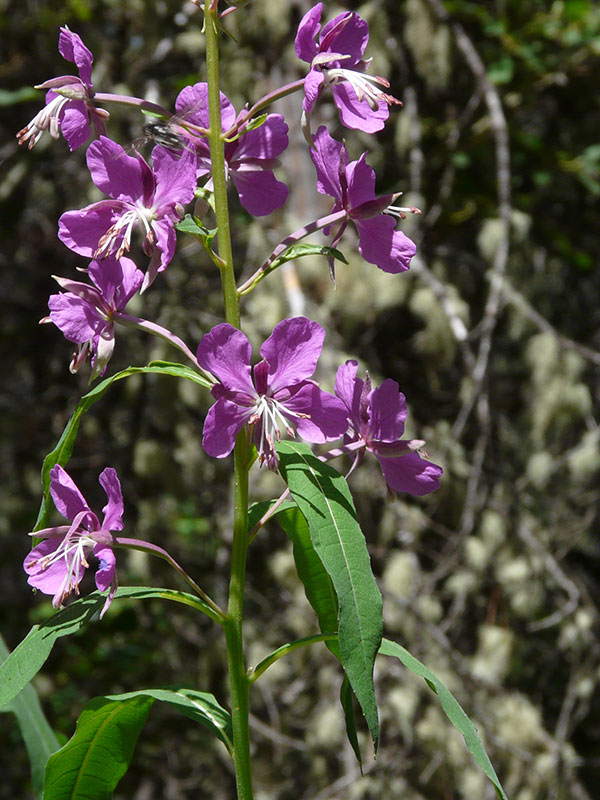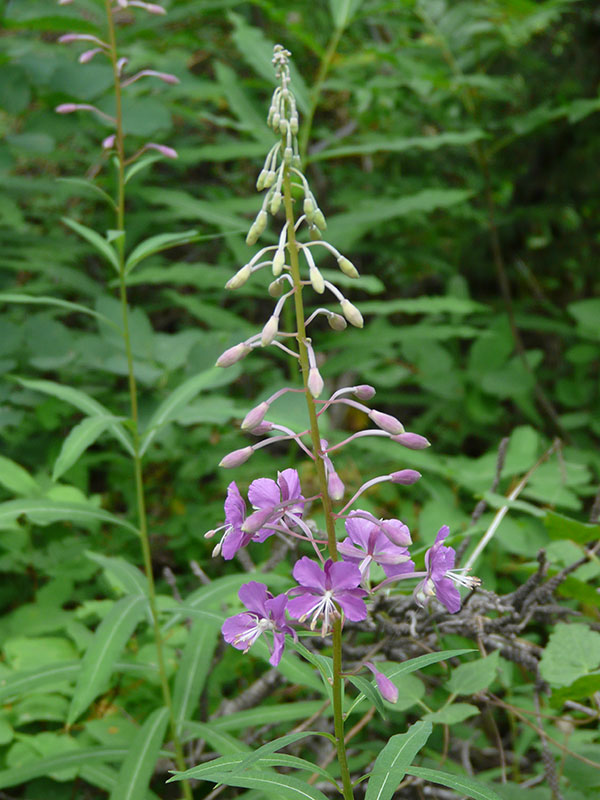Chamerion angustifolium / fireweed
- bright pink flowers on tall inflorescence (raceme)
- flowers mature from bottom to top
- four petals
- spiral leaf arrangement – lance-shaped leaves have smooth edges
- pod-like seed capsule releases seeds to the wind
Synonyms: Chamaenerion angustifolium, Epilobium angustifolium
Also known as: great willow-herb; rosebay willow-herb
This is an easy plant to see – it is tall and the flowers are bright pink – and like all bright flowers, seeing it tends to raise one’s spirits. Knowing something about its life style and phenology makes it even more remarkable.
Because of its small seeds, reproduction by seeds is difficult for fireweed in the absence of a disturbance that removes the surface litter and organic matter… such as a fire. Fireweed is an efficient pioneer plant/colonizer in that case. It was, for example, one of the first plants back on the slopes after Mount St. Helens erupted in 1980, and one of the first plants on burned ground after the London bombings in World War II. For its beauty, its usefulness, and its place in history, fireweed was one of named the Plant of the Week, by the US Forest Service.
It is interesting, however, that fireweed seeds do not persist long in the seed bank, just a year or two. That means that when it colonizes, it has to do so from recent seed, or from seed blown in from off-site. As a consequence, its population size increases for several years after a fire or disturbance.
“Normally”, it is later replaced by other species as trees or shrubs (e.g. Ceanothus velutinus) come in and shade it. It can, however, be persistent in non-forested areas like those at higher altitudes or in drier meadows throughout the Valley. It also does well in high pH, calcareous soils low in organic matter.
As an alternative to seeding, allowing it to establish and maintain large colonies in sun-exposed areas, it propagates vegetatively via rhizomes. What could be a better match to what the Valley has to offer?
| Color | |
|---|---|
| Family | |
| Blossom size | |
| Inflorescence size | |
| Inflorescence type | |
| When? | |
| Where? |







